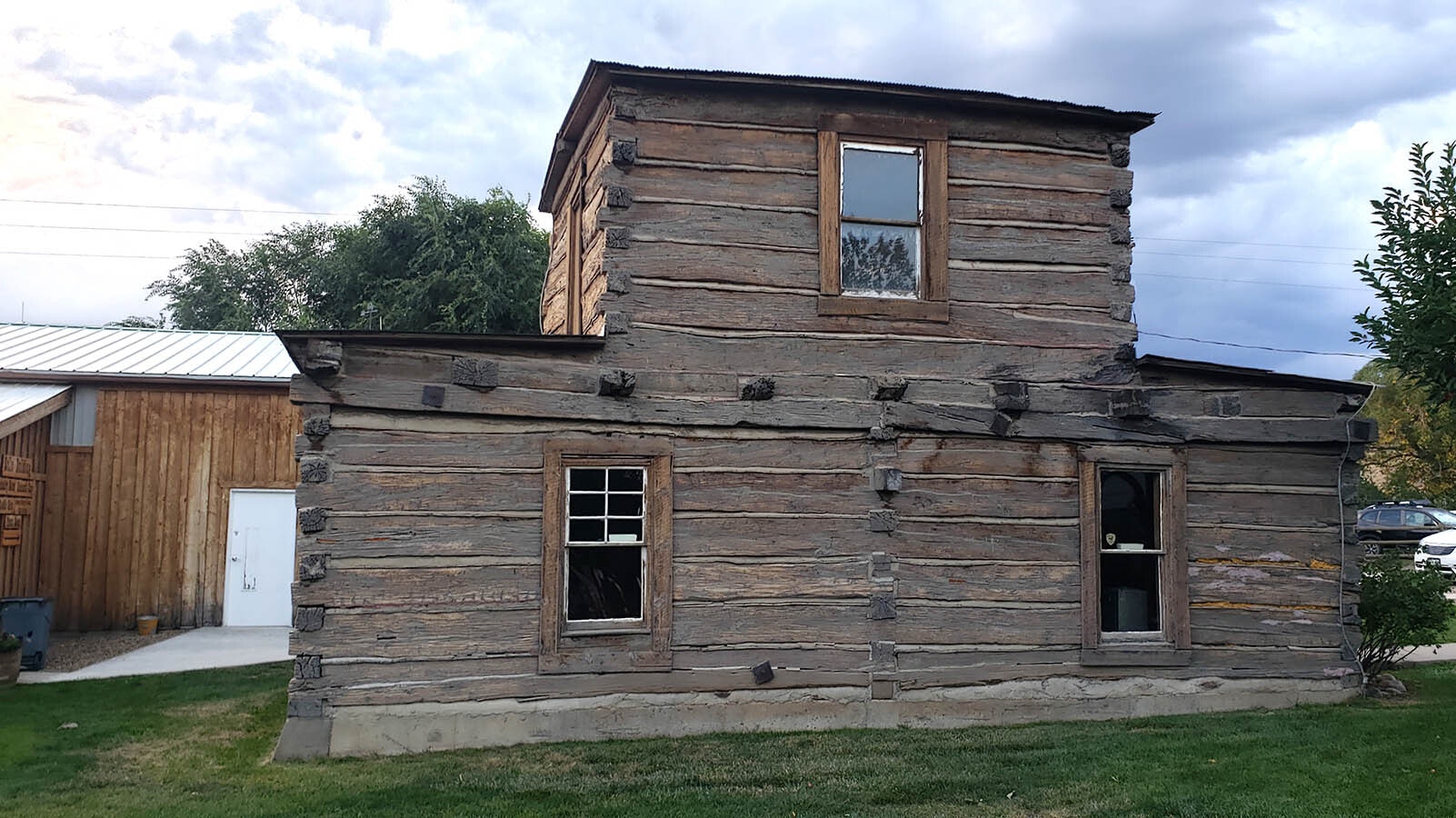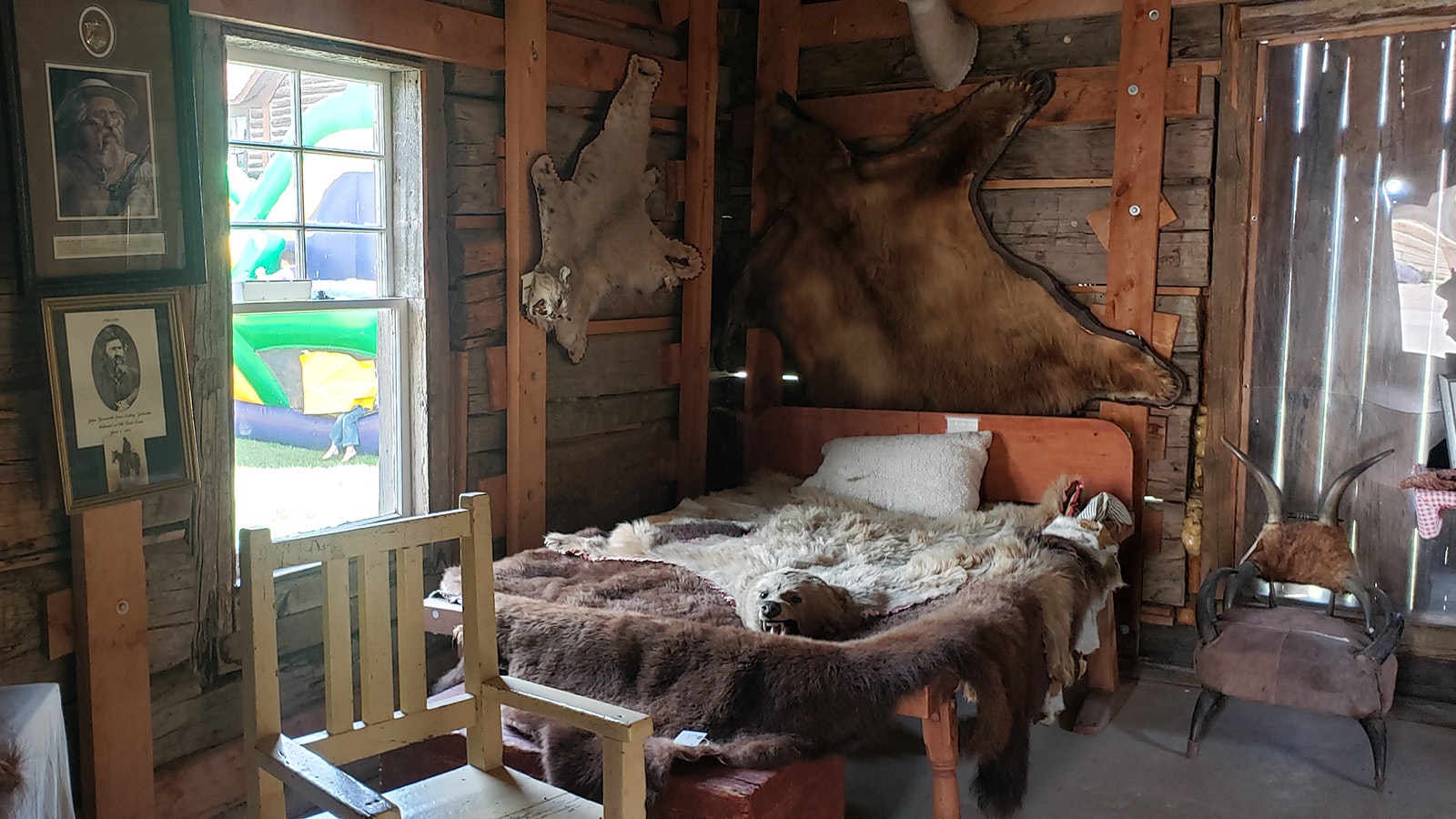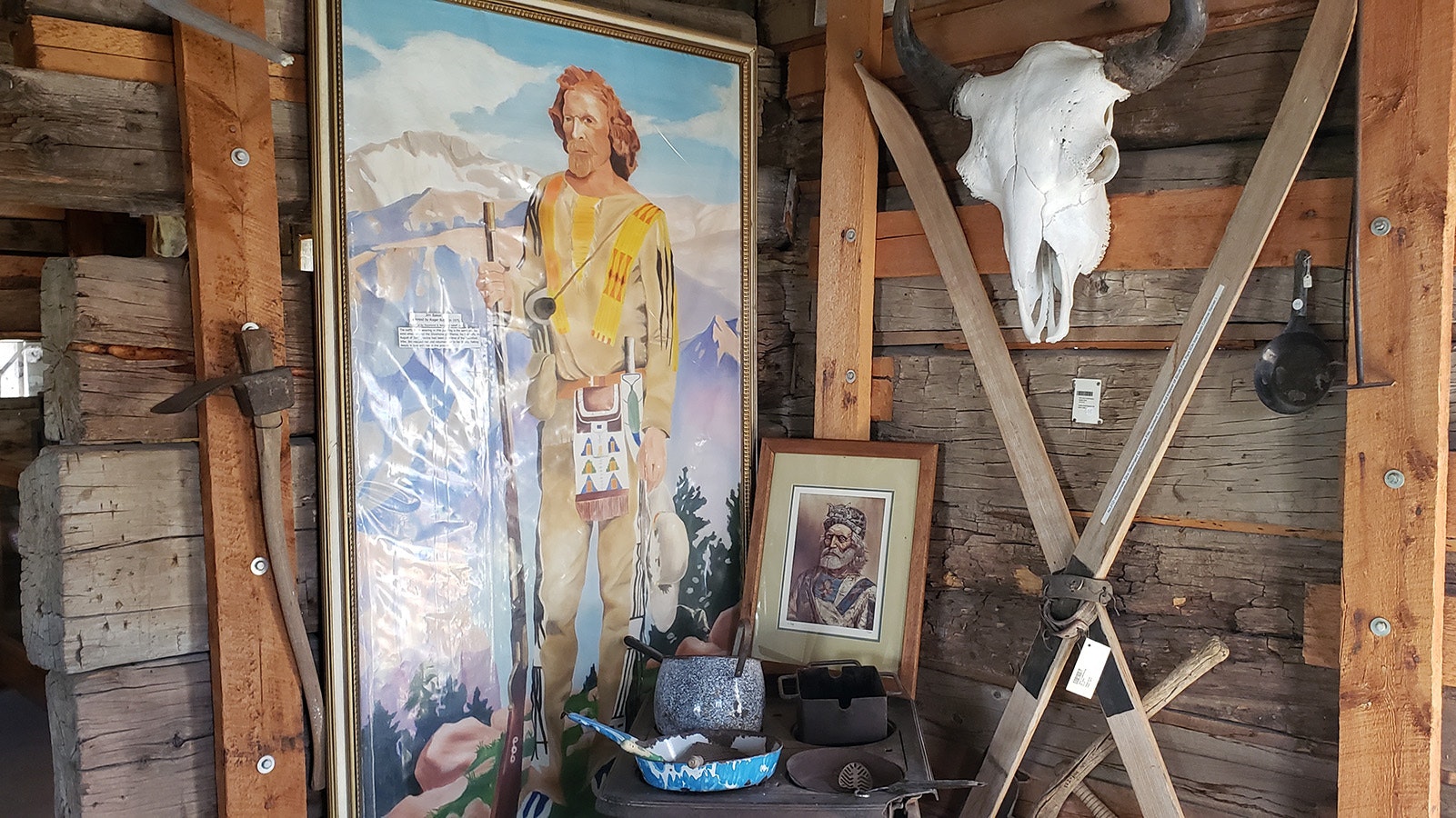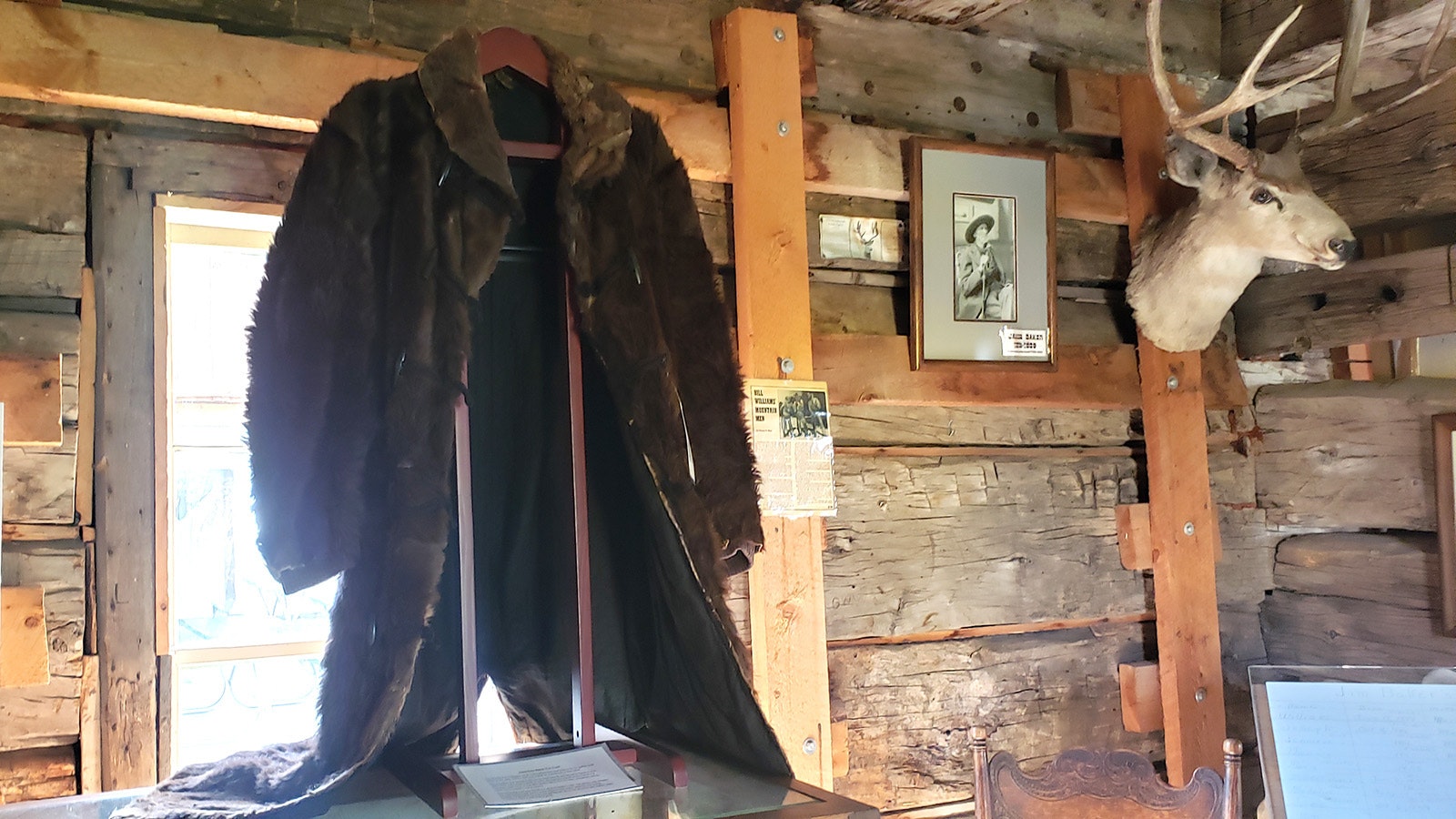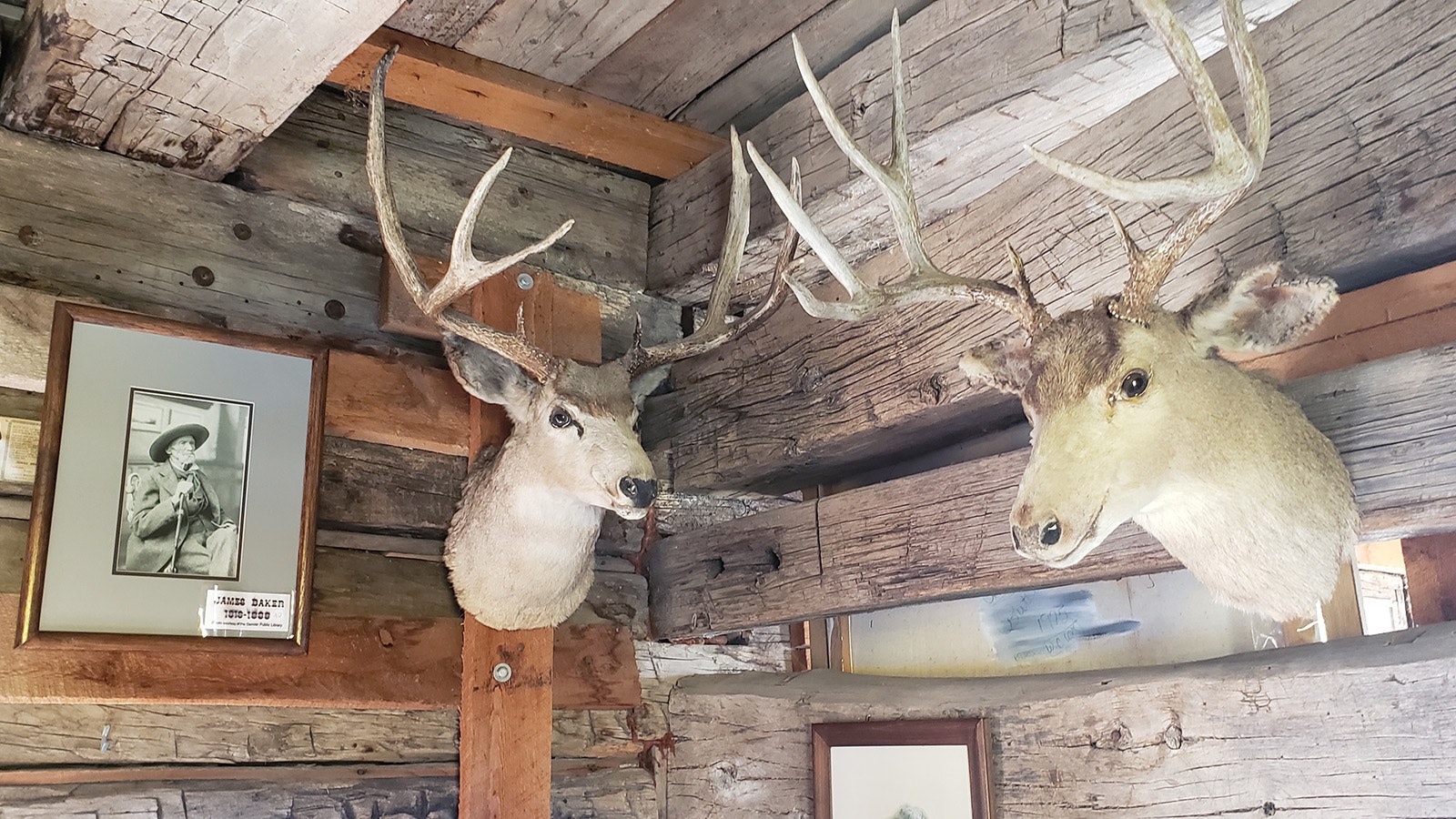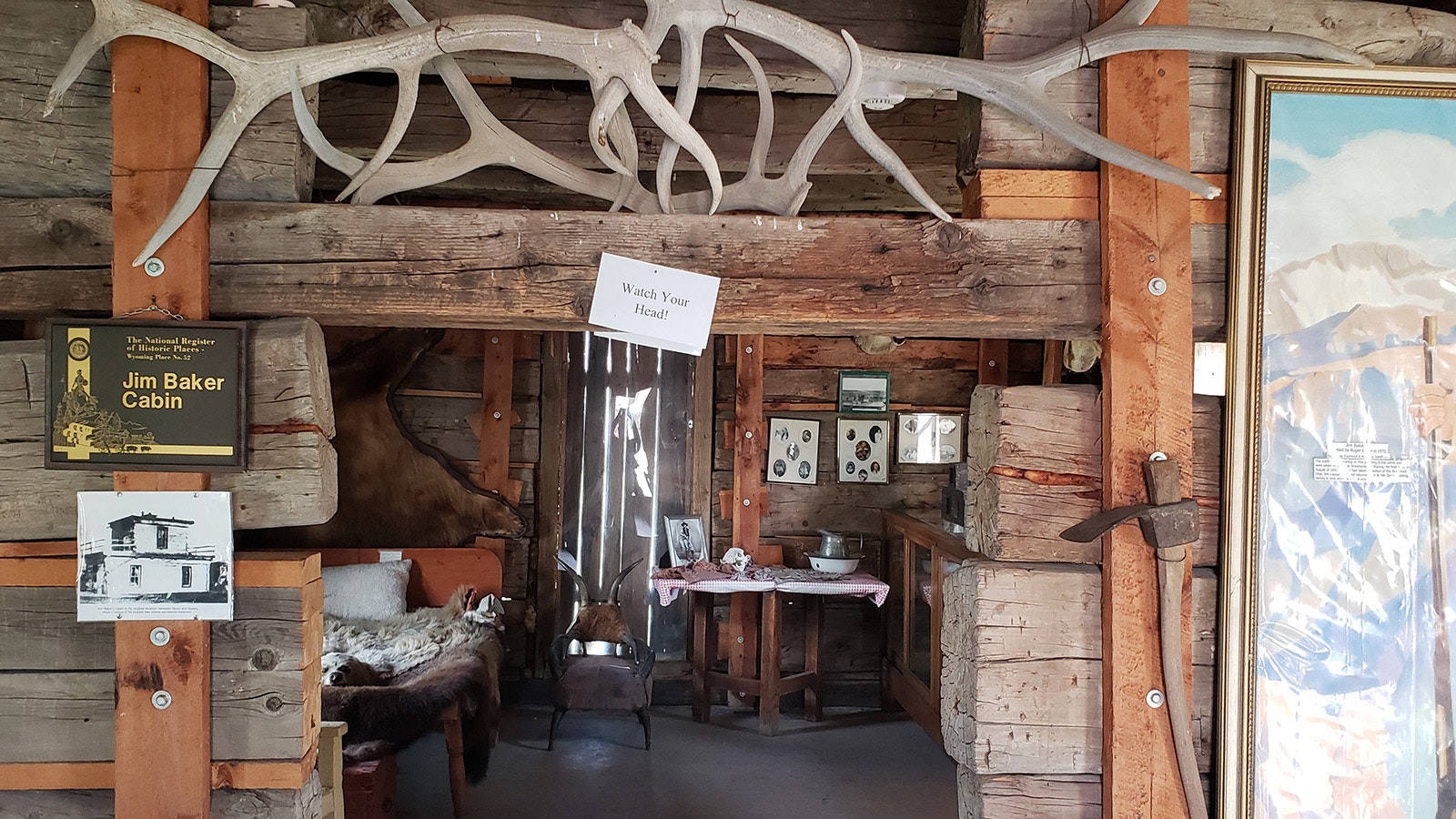After standing up to Wyoming wind and weather for 152 years, mountain man Jim Baker’s cabin at the Little Snake River Museum in Savery, Wyoming, could use more than just a little TLC. Several of its old cottonwood logs have succumbed to rot and the ravages of time. That has the museum seeking a source of old-stand cottonwood trees to replace them.
But it’s going to take more than hand-hewn cottonwood logs to fix the cabin’s problems. Not to worry, though, the museum already has the cavalry on its way. They have enlisted the help of nationally recognized preservation group, HistoriCorps, which will be bringing an expert team of volunteers to Wyoming this summer to work on saving the cabin.
As part of that work, expert preservationists will be assessing the cabin’s damaged logs, determining which can be salvaged and repaired, and which must be replaced. They will also advise on long-term strategies to preserve as much of the original cabin as possible for as long as possible.
“They’ll be here for about three weeks in July,” Little Snake River Museum Director Lela Emmons told Cowboy State Daily. “They camp out and work five days a week.”
Getting ready for HistoriCorps’ summertime visit is a particular focus right now for the museum that’s located in Little Snake River Valley. That includes lining up a suitable supply of hand-hewn cottonwood logs for HistoriCorps volunteers, so they will have all the proper materials on hand for repairs. Donations are also being taken to help preserve the cabin, Emmons said, with overall costs of saving the cabin estimated to be around $40,000.
“We’re buying a chain saw and an Alaskan mill, which will kind of cut the logs into roughly the right sizes,” Emmons said. “The Alaskan mill is something that guides a chainsaw, so it mills the logs into beams, or square-cut logs.”
Emmons said they plan to cut logs larger than necessary, then hand hew them to an appropriate size.
“There’s going to be a lot of labor involved, and we’re starting to work on that right now,” Emmons said. “We’ve located some good stands of trees, and some ranchers have volunteered to help us with some equipment. These are not the biggest of big cottonwoods, but they’re pretty good-sized trees.”
Selective Repairs
The goal in restoring the Baker Cabin is to keep as much of the original logs as possible.
“They say that if a log is 50% still good, they will just remove the rot, then face the log,” Emmons explained. “They have this whole process for that.”
That process involves “capping” the cleaned historic log with the same type of wood, cut in the same fashion, as the old piece.
“That way they are using as much of the original material as possible,” Little Snake River Museum Assistant Director Nikki Devlin told Cowboy State Daily. “As far as I can tell, there’s probably 20 or so logs, based on what I’ve noticed and could see and what I’ve touched, kind of knocking on them and hearing if they are hollow or not.”
HistoriCorps has expert volunteers from all over the United States, who travel around the country with a mission of preserving some of the most historic structures in America. It has won numerous national awards and recognition for its work.
“Being that this Jim Baker cabin is actually on the national registry, that puts a little bit of pressure on whoever is doing the restoration,” Devlin said. “The work has to be to whatever specifications … and HistoriCorps does everything to a T as far as that’s concerned.”
That expertise is particularly vital for a small organization like Little Snake River Museum, which has a limited labor pool, and finite funding.
“We don’t want to do it wrong,” Devlin added. “Because it’s registered as a historic site. And so, we’re hoping we can get the whole thing done this summer.”
That will depend, though, Devlin added, on whether there are any hidden problems once HistoriCorps gets into the project and starts assessing the cabin.
Who Was Jim Baker?
Jim Baker is an unsung hero of the mountain man era, with a legend every bit as compelling as Hugh Glass, Kit Carson and Jim Bridger, even if it has not yet been memorialized by Hollywood.
Not only did Baker beat impossible, Thermopylae-like odds at Battle Mountain, defeating hundreds of Native Americans with a dozen or so scouts, but he, too, like Hugh Glass, survived a bear encounter. In fact, he survived more than one.
And like his contemporaries Glass, Carson and Bridger, Baker, too, was approached by the famous dime store novelist Ned Buntline, who wanted to write the story of Baker’s life for the masses.
But Baker didn’t care to become famous, so he refused. He preferred to live out his life quietly, and, if the world forgot who he was, he was OK with that.
In fact, when Denver became too popular for his tastes, Baker picked up his mountain man life and moved on to the less populated Savery, Wyoming, building himself a miniature three-story cabin castle in the Little Snake River Valley in 1873.
The third-story watch tower, which Baker had built because he was convinced certain American Indian tribes who didn’t like him much were likely to come to call, was eventually taken down as hostilities eased. But it retained its second story, as a place for Baker to store the furs and hides that remained a large part of his trade far longer than most other mountain men of his day.
Baker would live out the rest of his days in his miniature Little Snake River Valley fort in relative obscurity, until his death in 1898, barely getting a notice in the newspapers of the day, even though he’d played a huge role in the settlement of the west alongside the greats like Bridger and Carson.

Battle Over Baker’s Cabin
After Baker’s death, there was something of a tussle over who would keep Baker’s unique cabin. Colorado wanted it. Cheyenne wanted it. And Savery wanted it, too.
Ultimately, Cheyenne seemed to win the tug of war, at least for a time, keeping the cabin on display in Frontier Park for 60-some years. Eventually, though, their interest waned. The cabin was disassembled for storage one year — never to return, left to the tender mercies of oblivion and neglect.
That allowed Savery to eventually bring Baker’s cabin home, to a location that’s just a mile away from its original spot, at the Little Snake River Museum. There it has become a center piece of America’s early mountain man history, depicting how a real mountain man’s cabin of the time period might have looked, as well as presenting the life and legends of that same mountain man.
Stories about Baker and his family trailing their cattle to Wyoming are still told in the Little Snake River Valley, where there are still many of Baker’s descendants.
“It took them so many months to get there,” she said. “And then they built that cabin where he lived out the rest of his years. So technically, he was the first retiree in the Little Snake River Valley.”
At one time, Savery had Jim Baker Days, an event to celebrate and remember the mountain man, as well as a time for family members to reunite and celebrate their ancestor.
Not long ago, Baker’s sword also came home to Little Snake River Valley, thanks to a Baker family friend of old, who also contributed a bit of oral history about Baker’s death.
The stories told of Baker’s rough and tumble mountain man ways are sometimes funny and talk about how he made some of the valley’s more refined citizenry uncomfortable with his tattered buckskins, and sometimes unwashed odor.
“He was kind of the last of the frontiersmen,” Emmons said. “He was a scout and a guide, and both fought in Indian battles and was sort of a friend to Indians in the area.”
Even so, he was more refined than appearances — or smells — might suggest.
“He had a couple of clocks and other things that were very fancy, very refined,” Emmons said. “And he himself had certain refinements that you wouldn’t necessarily expect. He was better educated than your average mountain man.”
Renée Jean can be reached at renee@cowboystatedaily.com.


